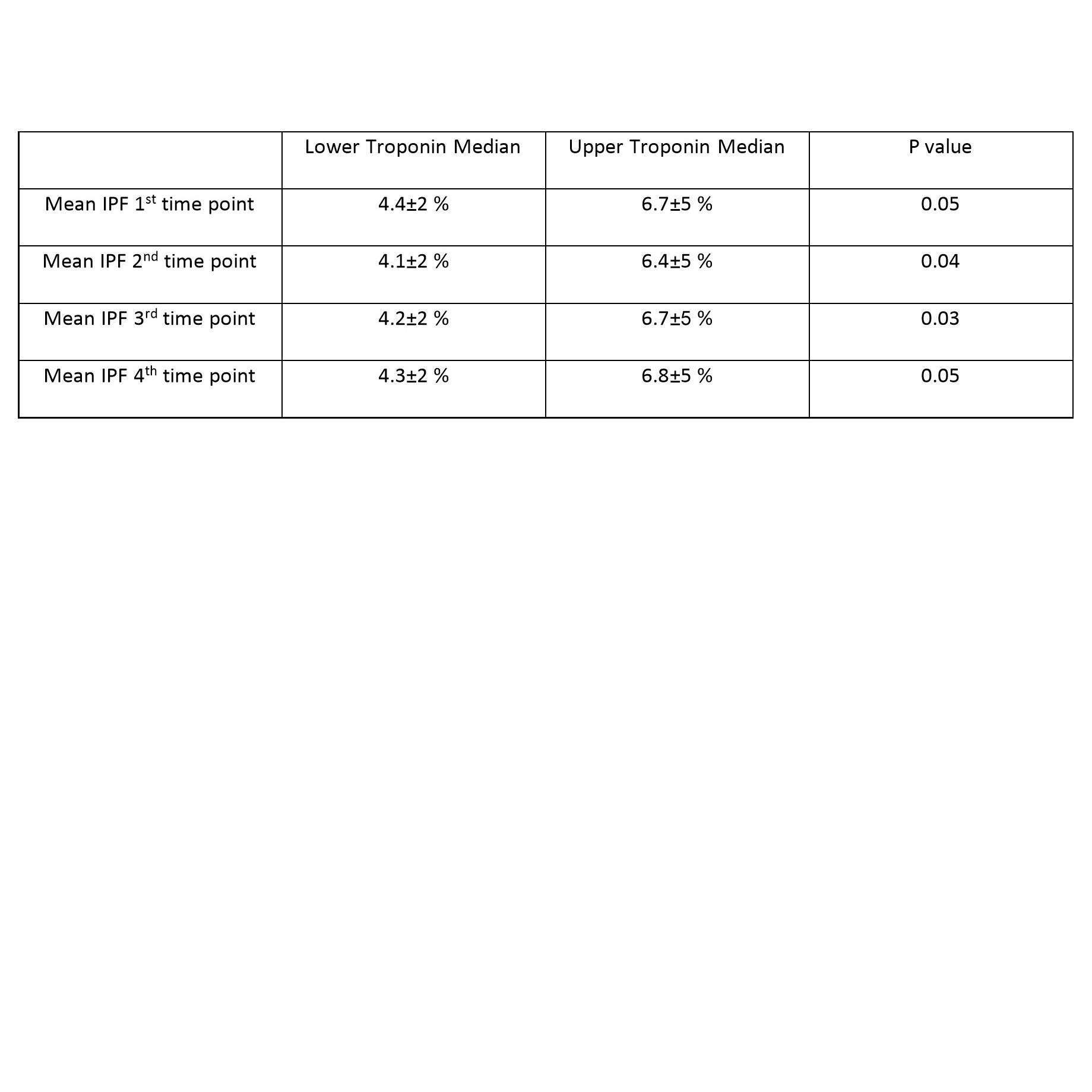
Association between Peak Troponin Level and Immature Platelet Fraction in Patients with Acute Myocardial Infarction
Background: In recent years a clear association has been demonstrated between levels of immature reticulated platelets in the circulation and the occurrence of acute coronary syndromes. Limited data regarding the association between immature reticulated platelet fraction (IPF) and infarct size, and the stability of IPF levels over time. Accordingly, the current study had two aims: a. to examine whether the size of acute myocardial infarction (AMI), evaluated by peak troponin level is associated with IPF; b. to determine the temporal trends in IPF levels in patients with AMI.
Methods: Fifty two patients with AMI – either ST-elevation or non ST-elevation were recruited. Four blood tests for IPF were taken: a. at baseline before coronary angiography; b. one day following angiography; c. just before discharge; d. one month following the index event. IPF was evaluated by a Sysmex XE-2100 autoanalyzer. The association between peak troponin levels and IPF over time was evaluated.
Results: Among the 52 patients (mean age 61.5±12.5 years), there were 8 (15.4%) women, 17 (32.7%) patients with diabetes, 27 (52%) were hospitalized with STEMI and 25 (48%) with NSTEMI. There were no differences in IPF levels overtime during the one month follow-up period. Peak troponin level appeared to be associated with the levels of IPF in all 4 time points. As shown in the table, the upper median of peak troponin levels had higher IPF values in all 4 time points compared to the lower median of troponin levels. An analysis according to tertiles of troponin levels yielded similar results.
Conclusions: Larger infarct size, evaluated by peak troponin levels, appears to be associated with a higher level of immature platelets in the circulation. The levels of IPF following AMI appear to be stable over a one month follow-up period. The clinical implications of these findings require further investigation.


Powered by Eventact EMS